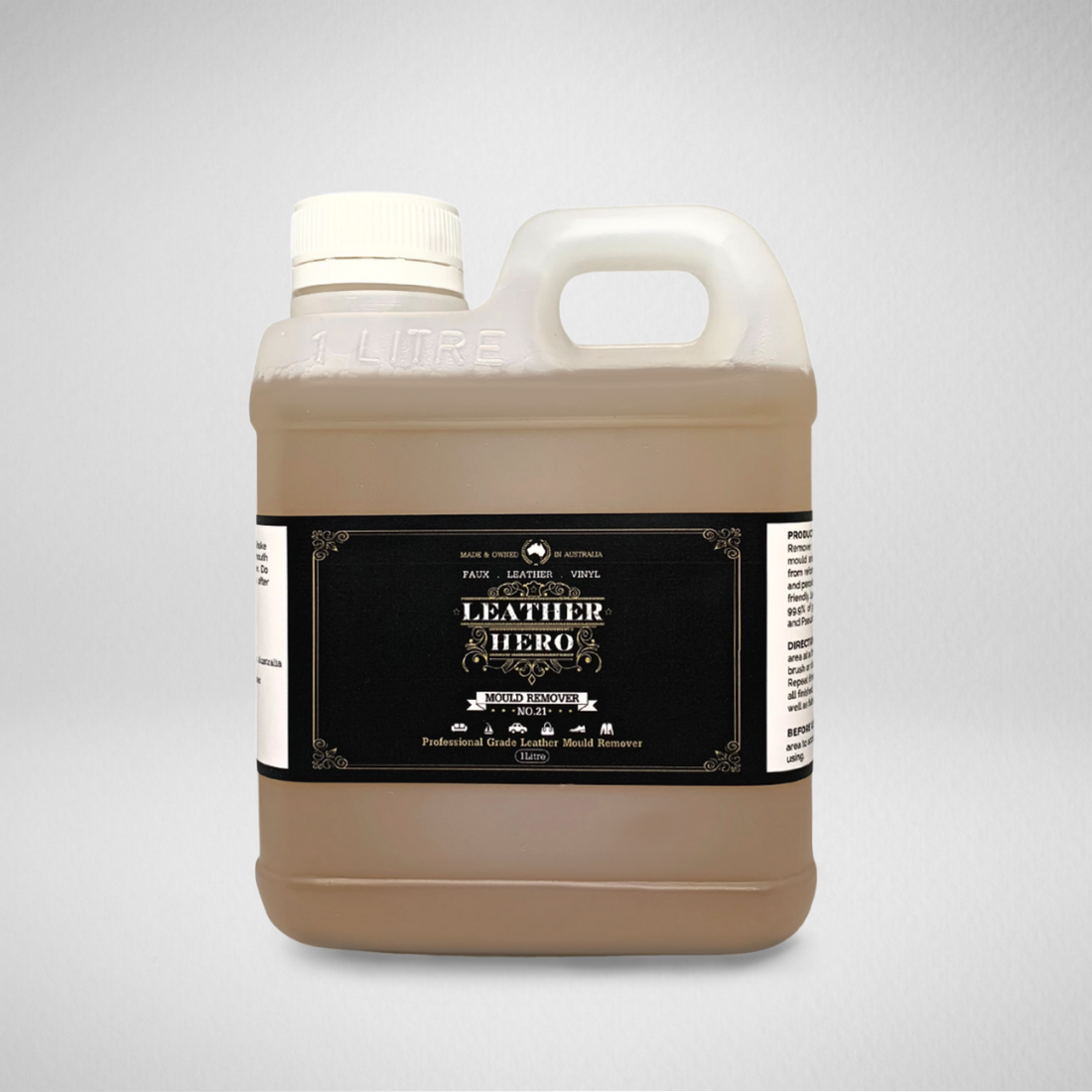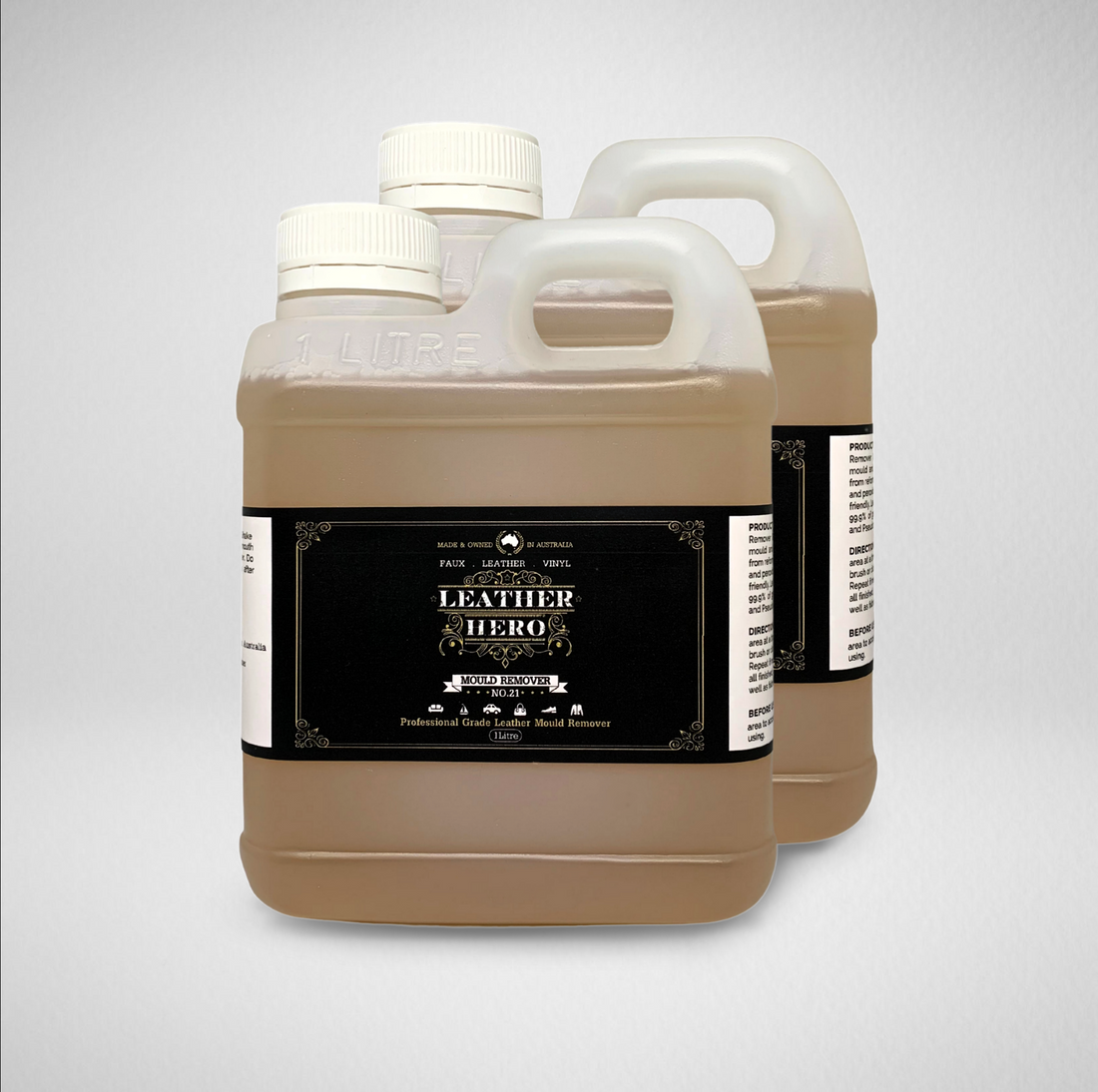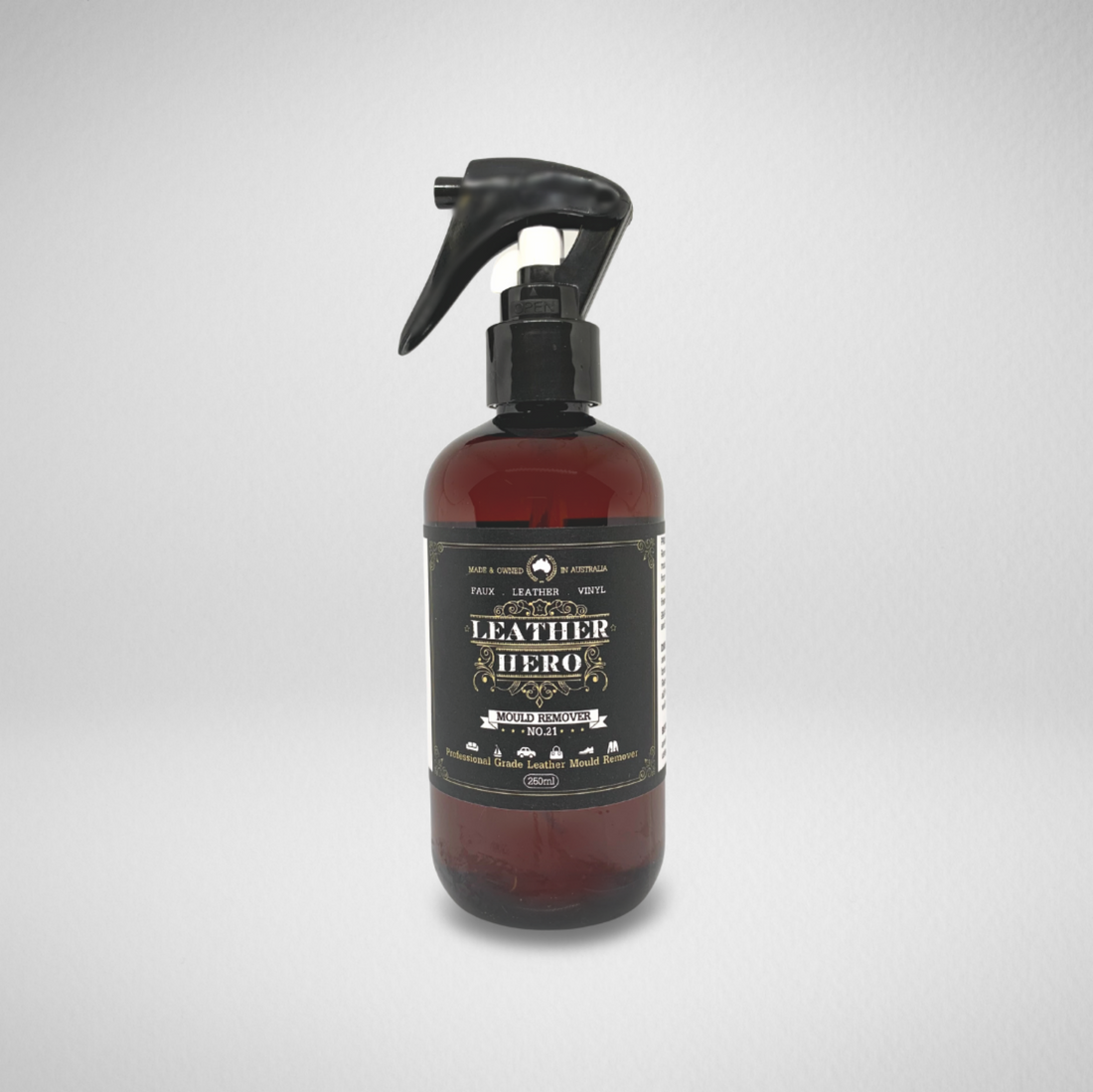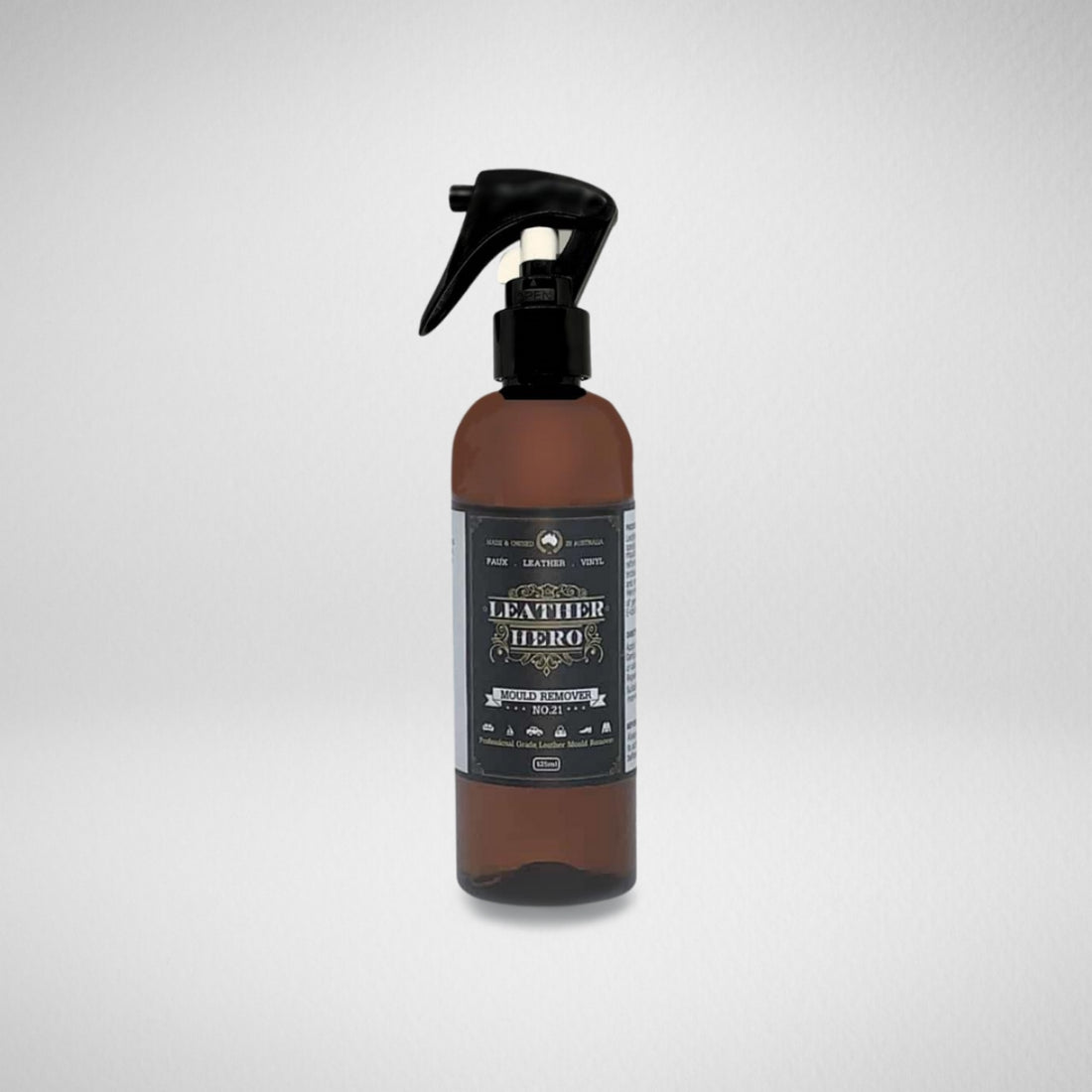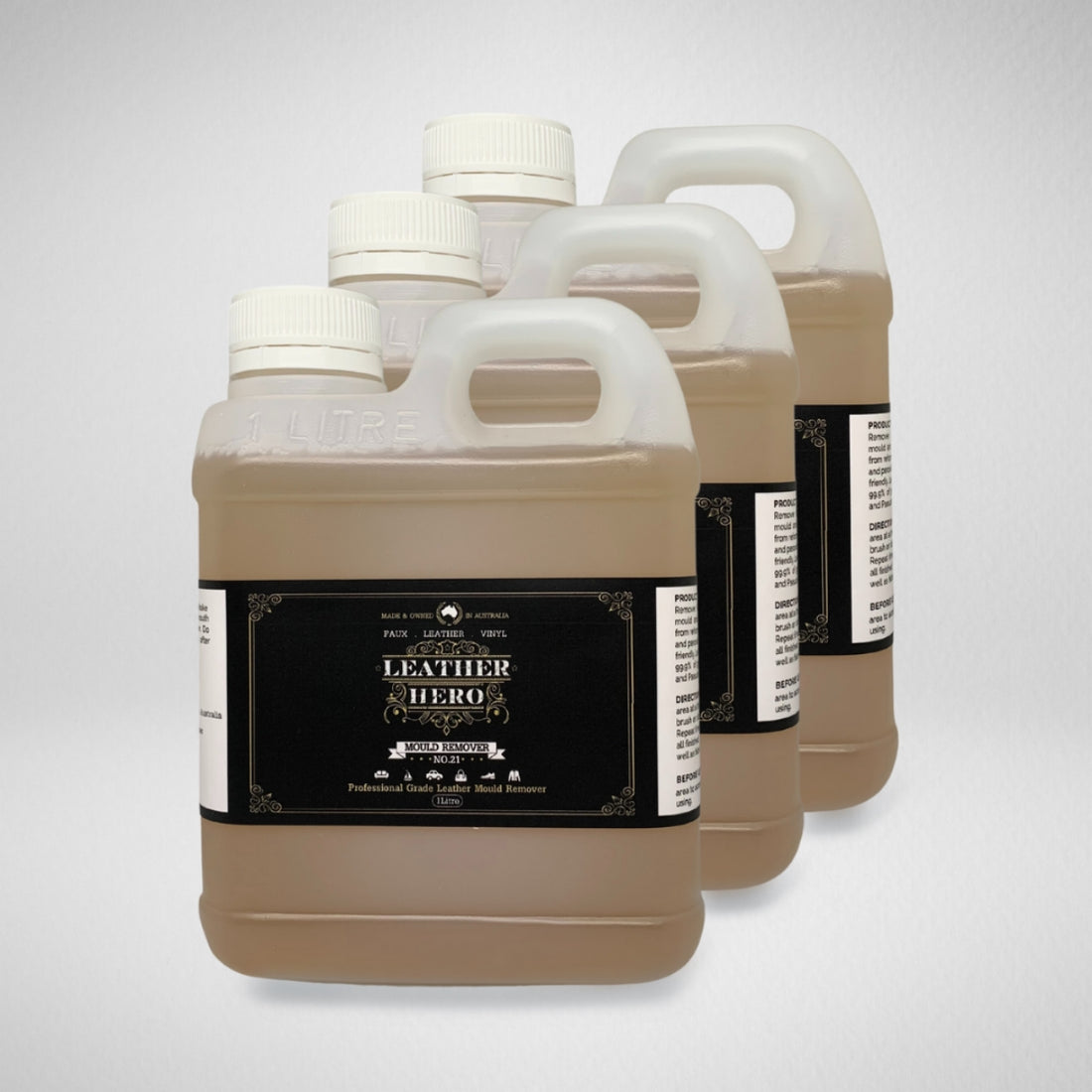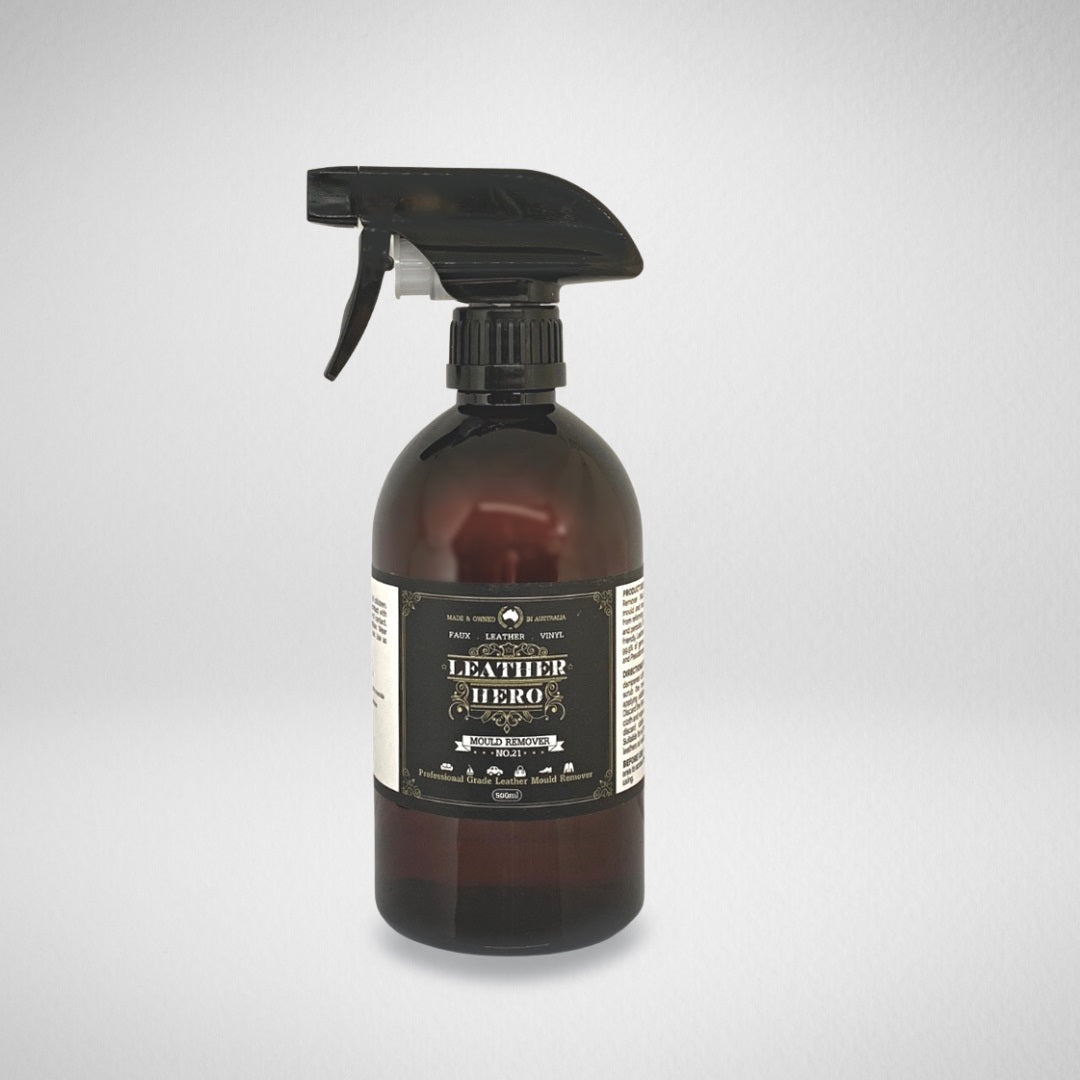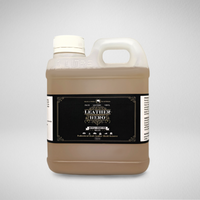
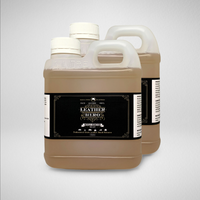
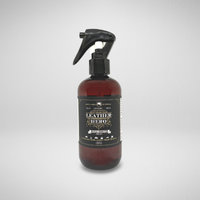
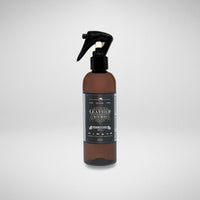
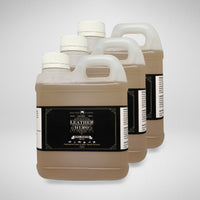
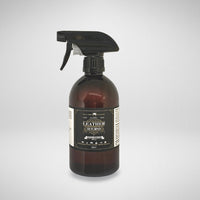
Leather Mould Remover
Mould Remover (No.21)
Banish mould from your leather with this effective mould remover and inhibitor.
- Removes mould and mould spores and inhibits future outbreaks
- Free of bleach, chlorine, triclosan and peroxide
- Non-caustic and kills 99.9% of germs, including staphylococcus, e-coli and pseudomonas
- Water-based
- Pleasant smelling
- Easy to use
- Suitable for most leathers, fabrics and other surfaces
Easy to use
Simply spray onto the leather or pour generously onto a cloth and wipe over the surface. Allow it to penetrate then wipe to remove the mould. A brush can be used to agitate into the grain if needed. Repeat with a fresh cloth to 'rinse'. Be sure to have plenty of fresh cloths to help avoid cross-contamination.
Ideal mould conditions
Mould spores are in the air and ready to colonise surfaces such as leather, fabric and carpet when conditions are ideal. Mould flourishes with:
- Warmth
- Humidity or moisture
- An organic food source (such as grime from soiling, spills and skin transferred through normal handling)
- A porous substrate
After mould treatment
To reduce the chance of mould returning, take the following steps:
- Clean with a suitable leather cleaner to remove the mould food source
- Nourish with a suitable conditioner to maintain softness and suppleness
- Ensure leather goods are dry before storing
- Reduce humidity in the storage area if possible
Mould stains
In rare cases, mould can leave stains or eat into leather coatings leaving a frosty appearance. Whilst the mould can be removed with Mould Remover (No.21), recolouring may be needed to cover the damage.
Suitable for use on most types of leather, vinyl and fabric. Always test in an inconspicuous area first.
125ml: 1 or more handbags, 1 or more pairs of shoes, 1 small leather jacket, a few belts
250ml: 1 x large leather jacket, 1 x armchair
1L: 1 x 3 seater sofa or more
2L: 1 x 5 seater lounge suite
3L: Lots and lots of leather
Coverage estimates are broad as individual users have leather
that is in different condition, use products on different care schedules and use different amount of product per treatment. Some mould outbreaks may benefit from a second application.
Pack sizes
125ml
250ml
1L
2L
3L
1) Spray onto the leather surface or pour generously onto a damp cloth
2) Wipe over one area at a time until all areas have been treated. A scrubbing brush can be used if needed. On large jobs, change cloths throughout to help avoid spread mould spores.
4) With fresh cloths, wipe over the entire surface again to 'rinse' and allow further penetration of the product into the leather. No need to wipe or wash off
Launder cloths seperately or discard.
Ideal for: Leather, vinyl and fabric that is affected by mould and mildew
Use with: a leather cleaner and conditioner 24 hours after treatment
Application schedule: As needed
Application method: Can be applied by spray or by pouring a generous amount onto a damp cloth
Best accessories: A soft bristle scrubbing brush, lots of white microfibre cloths
Instructions: On the labels, Directions for Use tab, Tips and under the How To tab in main menu
Drying time: depends on environmental conditions and the amount of product used. Typically 30 mins to a few hours.
Time before use: wait a few hours
Available in kits: No
Tips:
A damp cloth can be used to wipe off mould before treating with Mould Remover
Have lots of fresh cloths on hand
Dispose of cloths afterwards or launder carefully
A brush can be used if it seems to help
Allow apparel to dry before storing
After mould treatment, clean any soiling (organic material, grime from skin, spills, food etc) from the leather. This soiling is a 'food source' for mould. Use a leather cleaner and scrubbing brush (if needed) followed by a leather conditioner
Troubleshooting: If, after removing the mould, there are stains or frosty/white marks on the leather/vinyl, the mould may have caused permanent damage to the leather coatings/surface. To resolve this, recolouring may be needed.
If mould returns, try to improve the environment by resolving water leaks and dampness. Clean the leather very thoroughly. Dry the leather thoroughly using room heaters, gentle sunshine, de-humidifers, or a hair dryer.
Test before use: Always test products in an inconspicuous area first. There are many makers of leather and leather coatings and whilst most are to standard, there may be some that are not
Storage: Lid on tight and away from direct UV light and heat (in a cool dark cupboard). Avoid contaminating the contents with baterial sources including skin
Mould be gone
Treat mould and mildew with this simple wipe-on Mould Remover (No.21).
Kills mould, spores and 99.9% of germs.
Best practice mould removal
1) With gloves on, spray Mould Remover (No.21) onto the leather or pour onto a microfibre cloth then wipe over the affected areas. A brush can be used to loosen the mould if needed. Think of this step as 'cleaning'
2) With a clean cloth, repeat the process. Think of this step as 'rinsing'
3) Mould feeds on organic matter which comes from contact with skin, food spills and the atmosphere. Remove that food source with Cleanse (No.1)
4) Now that your leather is free of soiling, mould, spores and germs, condition it with Nourish (No.2)
Compare our Cleaners
Not sure if Mould Remover (No.21) is the one you want? Here is an overview of our cleaners.
The Gentlest Cleaner
Formulated to safely clean unfinished leathers, this product cleans grime and spills and helps to prevent damage (drying and cracking). Keep it on hand so that you can address spills as they happen. With regular use, the inevitable marks and stains that occur on unfinished leathers can be minimised.
Check out Nubuck, Suede & Aniline Cleanse (No.10) HERE.
The All-Rounder
Calibrated for the routine care of pigmented (painted/coated), waxed and synthetic leathers, this cleaner removes soiling from your car seats, handbags and furnishings. For sofas, a 3 monthly service is usually ideal and makes the work quick and easy. For overdue spring cleans, grab a scrubbing brush and lots of microfibre cloths.
Check out Cleanse (No.1) HERE.
Strong Surface Prep Before Colour Work
This strong cleaner is the one you need when you are doing repair and colour work. It's job is to remove the waxes, silicones, oils, emolients and grime from the surface so that the new colour and coatings stick well. Use generously and scrub thoroughly. This cleaner can also be used as a spot cleaner for stubborn marks.
Check out Spot & Prep (No.4) HERE.
For Those Dark Shadowy Dye Stains
Dark fabrics can transfer dyes onto and into leather. This cleaner can remove transferred dyes when they are on the surface. Once they have penetrated it can reduce or minimise the stain. Keep this cleaner on hand, along with a scrubbing brush and microfibre cloth to tackle transferred dyes as they happen.
Check out Dye Remover (No.15) HERE.
Destroys Mould
This product removes mould and mould spores and inhibits future outbreaks. It can be used on most leathers including furnishings, cars and apparel. After treating mould, clean your leather to remove the organic matter that feeds mould (such as grime from hands, food spills etc). Follow up with a nourishing conditioner that's right for your leather.
For Pesky Ink Marks
Ink marks from pens and biros can be on and in leather. This cleaner can remove ink when it's on the surface and can minimise it when it has penetrated. Keep it on hand to deal with ink accidents as they happen. Never rub as this can remove coatings.
Check out Ink Remover (No.) HERE

